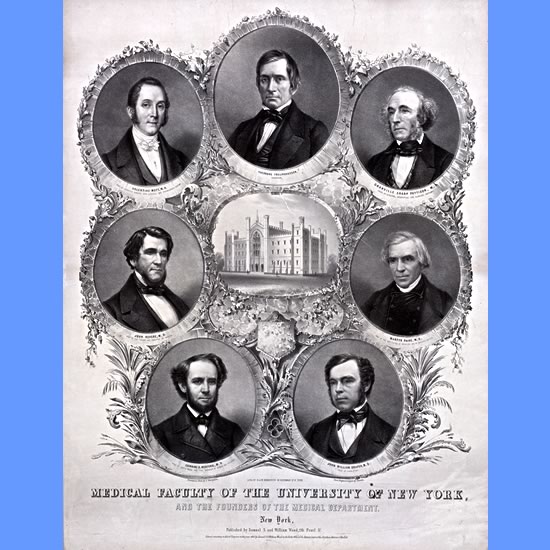Records of John William Draper,
1839 and 1846
 Entire Record
Entire Record Catalog
Catalog Transcription
Transcription
In his time, John William Draper (1811-1882) was well known as a scientist, historian and photographer. Having studied chemistry at the University of London before immigrating to the United States, Draper received a medical degree at the University of Pennsylvania. He is pictured with the other founders of the medical school at New York University (then known as the University of New York) in this 1840 lithograph. He became president of the school in 1850. In the late 1840s he bought property on a hilltop in Hastings and built a home there, which still stands today.
Draper’s contributions to chemistry include studies of how oxygen passes into blood vessels in the lungs, how light helps plants to grow, and how light can be used to identify an object’s chemical composition.
He had a fascination with the new field of photography and constructed his own daguerreotype camera in 1839. Shortly thereafter he took the first photograph of a human being—his sister, Dorothy Catherine Draper, and he took the first photograph of the moon (which is now in the collections of New York University).
In spite of his scientific achievements, it was his books on history that made him famous. Among his titles were: A History of the Intellectual Development of Europe and A History of the American Civil War.

